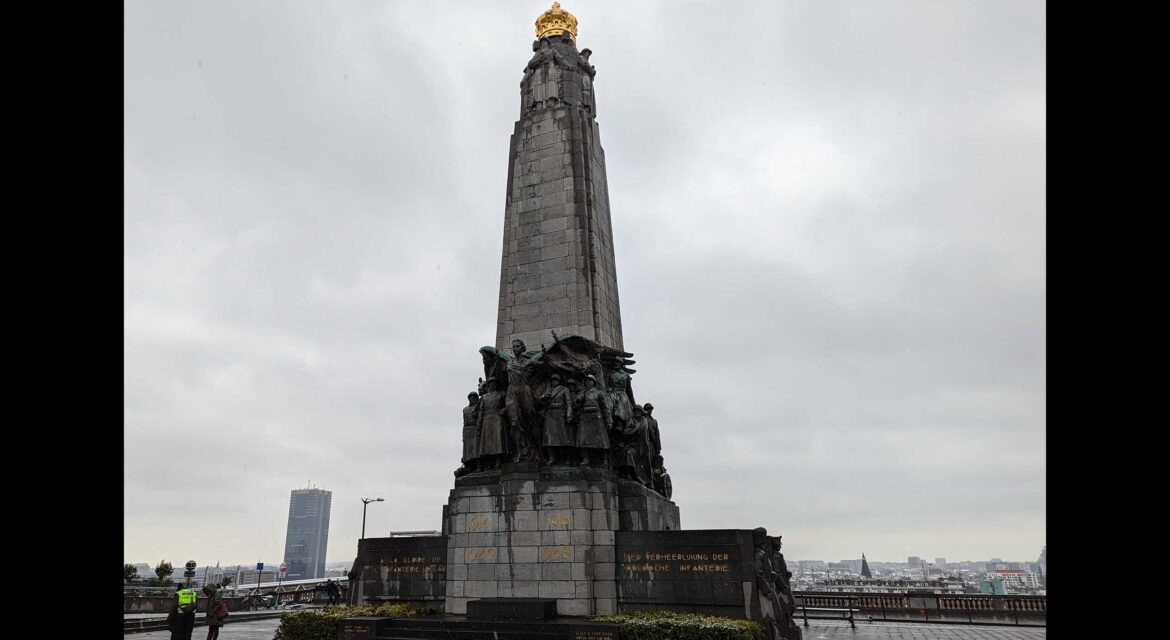 Located in the center of Brussels, Belgium, the Infantry Memorial has been constructed in the shape of a large symbolic column in remembrance of Belgian foot soldiers who fought for the country in World War I and Word War II. The structure and golden top physically attract attention from across the city to honor the efforts of Belgian soldiers in a way that spans the eras.
Located in the center of Brussels, Belgium, the Infantry Memorial has been constructed in the shape of a large symbolic column in remembrance of Belgian foot soldiers who fought for the country in World War I and Word War II. The structure and golden top physically attract attention from across the city to honor the efforts of Belgian soldiers in a way that spans the eras.
To the Glory of the Belgian Infantry
 Originally intended to honor and express gratitude to the 32,000 infantry soldiers who fell during what would become known as World War I, the Infantry Memorial was designed by Edouard Vereycken and installed in 1935. It forms the center piece of the square that is located in the heart of Brussels.
Originally intended to honor and express gratitude to the 32,000 infantry soldiers who fell during what would become known as World War I, the Infantry Memorial was designed by Edouard Vereycken and installed in 1935. It forms the center piece of the square that is located in the heart of Brussels.
Gold inscriptions on the front and sides mention the importance of safety and law while the main phrase is translated into English from Latin as “To the infantrymen who died for their country.” The years 1914-1918 and 1940-1945 are prominently displayed on each side, with each set lining up with Belgium’s participation in World War I and World War II.
The front of the memorial features a depiction of a winged Nike, spreading her wings around a group of Belgian soldiers headed toward battle. Various sculptures decorate the other sides of the memorial, with a single memorial of an unknown soldier at the base inside the monument.
The Infantry Memorial stands in front of the Palais de justice de Bruxelles and across the Place Poelaert from the Anglo-Belgian War Memorial, defining the center of Brussels in a way that would be very different without these sacrifices. In doing so, the monument highlights what it can mean to make an impact on the hearts and minds of audiences.

Legacy and Connection
 Sitting on a raised platform that overlooks the city center of Brussels and provides a tremendous view of the surroundings, the Infantry Memorial provides audiences with multiple experiences and reasons to visit. These multiple connections to the past and present of Brussels and all of Belgium highlight the many different ways a memorial can physically and emotionally make an impact on people and an entire city.
Sitting on a raised platform that overlooks the city center of Brussels and provides a tremendous view of the surroundings, the Infantry Memorial provides audiences with multiple experiences and reasons to visit. These multiple connections to the past and present of Brussels and all of Belgium highlight the many different ways a memorial can physically and emotionally make an impact on people and an entire city.


